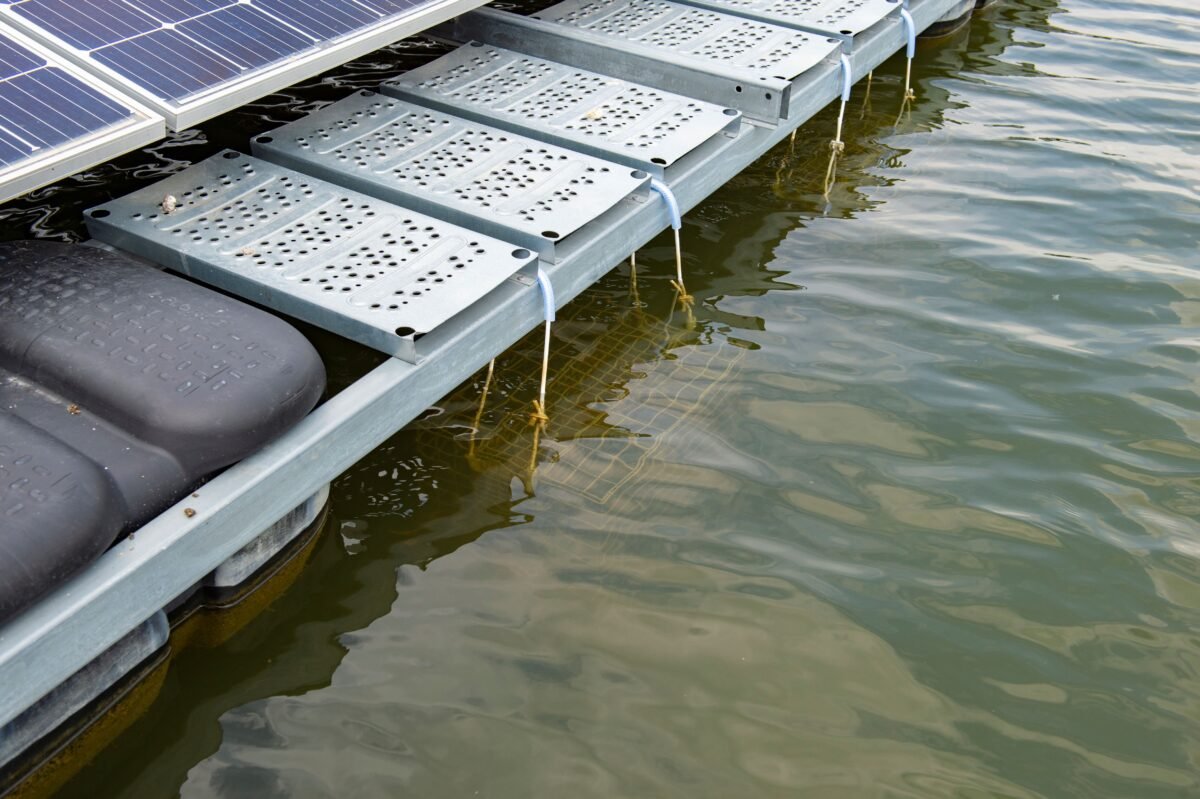The German developer has launched environmental impact monitoring studies at eight of its operating parks in Europe to collect scientific data on aquatic fauna, water quality and avifauna.
Renewable energy project developer BayWa.re, which currently has 19 floating solar parks under construction or in operation with a capacity of more than 300 MWp, has published the first results of studies carried out in the areas of avifauna, wild fish farming and water quality of two of them. its floating solar farms in the Netherlands.
“Bio-smelters” for aquatic fauna
Establishing artificial biotopes (so-called biochats) under the panels is very beneficial for aquatic ecosystems. The first surveys carried out by Ecocean on the 20 biocottages of the floating solar park Bomhofsplas (Netherlands – 18 hectares), three years after their installation, show a significant increase in the occurrence of aquatic fauna (invertebrates and fish).
Biochats have a breeding function, they protect the fish from predators. They also serve as fish spawning grounds and habitats for microorganisms and invertebrates.
Focus on floating in France
BayWa re is currently working on two projects at an advanced stage of development in France, at old quarries. At Dordives in the Loiret, permit applications were submitted in the summer of 2023 for a project of approximately 14 MWp at an aggregate mining site that is still in operation. In Dompierre-sur-Besbre, BayWa is developing the first floating photovoltaic project in the Allier department on a former sand pit. Permit applications will be submitted at the end of 2023.
Water quality
In the same floating solar park Bomhofsplas, the water quality did not change after the installation of solar panels. Water quality control was measured by the University of Groningen over a period of 10 months. These measurements were made using sensors placed at various depths in open water and under the panels.
Dissolved oxygen levels also remain at normal levels. The temperature differences under the panels even decreased compared to the free water surface. Temperatures of the upper water layer were lower under the panels in warm periods, and cooling of the water was also slower under the panels in cold periods.
High incidence of birds
The first avifauna study was conducted in the Weperpolder Park in the Netherlands. This 1.5 hectare park was opened in 2018 and is located near a natural area. The goal of the census campaigns was to measure the number of birds and geese before and after the construction of the floating solar park.
Observations indicate high abundance – and comparable to baseline – of birds and geese on the lake. Some of them (ducks and seagulls) even use floating photovoltaic installations as a resting place. “This research effort allows us to improve our knowledge and design of our parks. A large number of articles are published, but few are based on measurement, monitoring or sound scientific foundations. » explains Constantin Magne, floating solar officer at BayWa re in France.
Five studies are still ongoing
BayWa intends to continue its research efforts to further enrich its knowledge and better integrate its future projects. Studies are still ongoing for the group’s five floating solar parks in the Netherlands and Germany. These study results could help public decision-makers better understand the real environmental impacts of floating solar parks and better evaluate the effectiveness of prevention, reduction or compensation measures proposed by project leaders in the authority. water. “These studies will help to define and implement effective preventive and compensatory measures. We still have some gaps to fill, especially in the area of quantification of evaporation reduction, which is a key issue in the context of water resource tensions,” concludes Constantin Magne.
This content is copyrighted and you may not reuse it without permission. If you would like to collaborate with us and reuse our content, please contact our editorial team at the following address: editors@pv-magazine.com.

